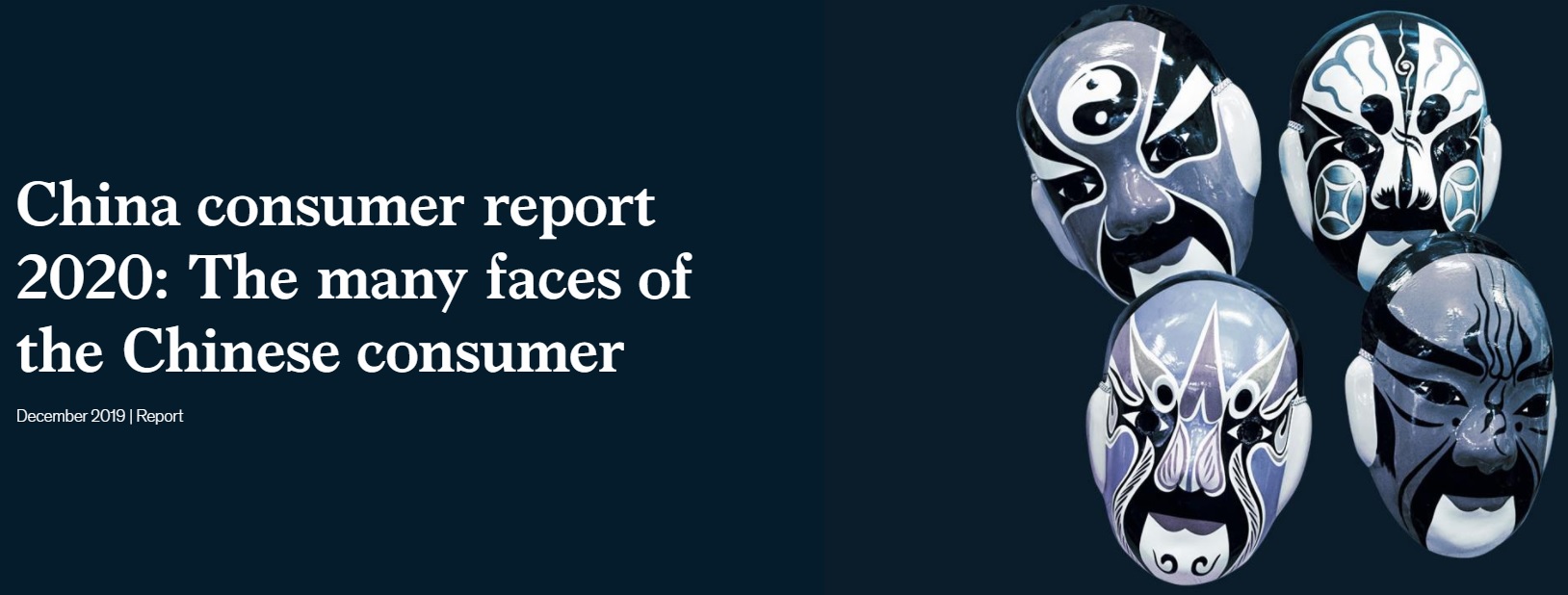My friends at McKinsey just released their annual look at the Chinese consumer. As always, they have interviewed thousands across China to draw out “what is different this year?” They start however from the key point that has not changed – that over the 2000s China has accounted for almost one third of the growth in global household consumption. And so, China ends the decade with a consuming middle class, hundreds of millions larger than it started the decade with.
Each of the 5 snapshot conclusions drawn from the survey can benefit from being put in the context of broader trends of the decade, which is what I try to do briefly below using my own personal experiences:
Growth from younger consumers in lower tier cities
Almost every consumer-focused company selling products – beverages, clothing, electronics – or services such as food delivery, travel, education – knows that they need to build reach in third and fourth tier cities. It is simple maths. What has surprised some is the bias of youth in these cities to spend on services rather than stuff, and on their willingness to spend at rates that it seems their income levels could not support. There are 2 reasons for this. Firstly, this generation is less enamored of the save to buy a property life style choice that the previous generation made. This generation is becoming accepting of the less cash demanding approach of renting. They are also much less interested in buying cars, ride sharing is their preferred way of getting around. And when cash flow runs short this generation is the most willing ever in China to spend on credit, to buy on installment. Their leverage is on average still supportable but is rising fast. Larger numbers will hit spending limits over the next couple of years.
Consumers becoming smarter in their spending
The report divides consumers into various segments, largely based on income and on how busy their lifestyles are. The trend of consumers across the board to place greater value on their time is one of the most fundamental changes over the last decade. Enabled by technology, Chinese consumers expect now to never have to wait in line, to check in, to use their bank, to pay at the store, to deal with government services. Recognize my face or my phone, listen to my voice and give me what I want, now. Any company that cannot deliver on this will be consigned to history as fast as the lines at the bank have disappeared. Chinese consumers now look to free up even more time – the replacement of cooking at home with delivery, of going to the store with home delivery and more.
The reminder from the report that the lower income segment still exists and that they want inexpensive products is important. It is too easy to get sucked into the narrative that all consumers are trading up. As the users of Pinduoduo prove, many remain in the “just getting by” category of spenders for whom cost remains paramount.
Health concerns shape more and more of consumer spending
Many, many categories benefit from this trend. Food suppliers using blockchain to prove to consumers the origin and path to plate of foods they are buying. Food suppliers providing more information on their packaging. Food suppliers offering more plant protein alternatives to meats, the source of which is not trusted. Growing cross border imports of food, supplements, vitamins, and pharmaceuticals. Air and water purifiers in the home, office, and car. An explosion of innovation in health insurance products, often linked to the application of technology to personal health tracking. Gyms and other forms of exercise. Companies should seek out and embrace the health-related aspects of their products and services, a potential source of differentiation.
Consumers becoming more sophisticated travelers
Anyone who travels to and from China experiences the spectrum of Chinese tourists – the tour groups of first-time travelers at the back of the plane heading to Bangkok, and the individual family groups at the front of the plane ticking off their third safari destination in southern Africa. Businesses and destinations have to adapt both to the needs of these distinct traveler groups and their numbers. Across China and in many international destinations, popular sites are simply swamped, creating unpleasant experiences and in worst cases safety hazards. Chinese travelers are incredibly sensitive to the perceived risk of travelling. An accident involving Chinese tourists on a boat off Phuket leads to millions fewer visiting Thailand in the following years. For many reasons, but with safety concerns prominent among them, Chinese tourism to Hong Kong is currently down over 90%. At a smaller scale an incident in a hotel where a Chinese tourist reports being badly treated following a theft could lead to a full boycott of the hotel, enabled by WeChat. Chinese tourists are also very sensitive to political winds, if government to government relations with a specific country are poor, Chinese travelers will tend to stay away.
The proximity of the Tokyo Olympics to China will mean that millions of Chinese travelers from the most to least experienced will visit Japan in August 2020. It will be interesting to see if their experience meets their expectations.
Rise of Chinese brands
The rise of Chinese brands in many categories reflects as much as anything the rise in capabilities of the Chinese companies that own these brands. Their growing depth in product development for China specific products, in the intricacies of marketing to Chinese consumers, in supply chain management and more has not just allowed Chinese companies to catch up with their global peers.
Generally, Chinese consumers are buying these products because they prefer them based on the essential characteristics of the product, not because the brand wraps itself in the flag and growing online nationalist tendencies. The one major exception to that is in technology where, with government encouragement, Chinese companies do emphasize their nationality as an important reason for consumers to buy their products. Companies should be alert to this behavior seeping into other sectors.
Closing
What is not in the report this year? There is, surprisingly to me, very little on the impact of an aging China or on the spending patterns of the retired. China’s cities have very varied proportions of young and old. Growth in consumption is going to be skewed to those, like Shenzhen, with the youngest age profile. Is spending by the elderly holding up as they head into retirement and their incomes fall? Is healthcare already consuming their discretionary cash – a recent Chinese government projection forecast spending on this to rise to over 25% of GDP by 2050.
Read the report for yourself and draw conclusions. And as always, take advantage of the great charts to bring any presentation on Chinese consumers to life.
Share this post via:







Flynn Was Right: How a 2003 Warning Foretold Today’s Architectural Pivot